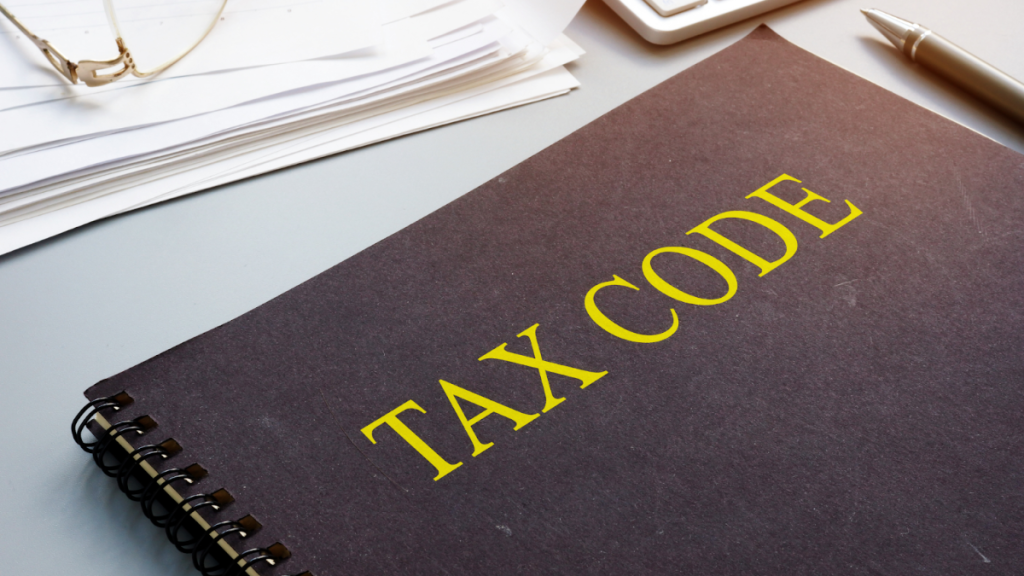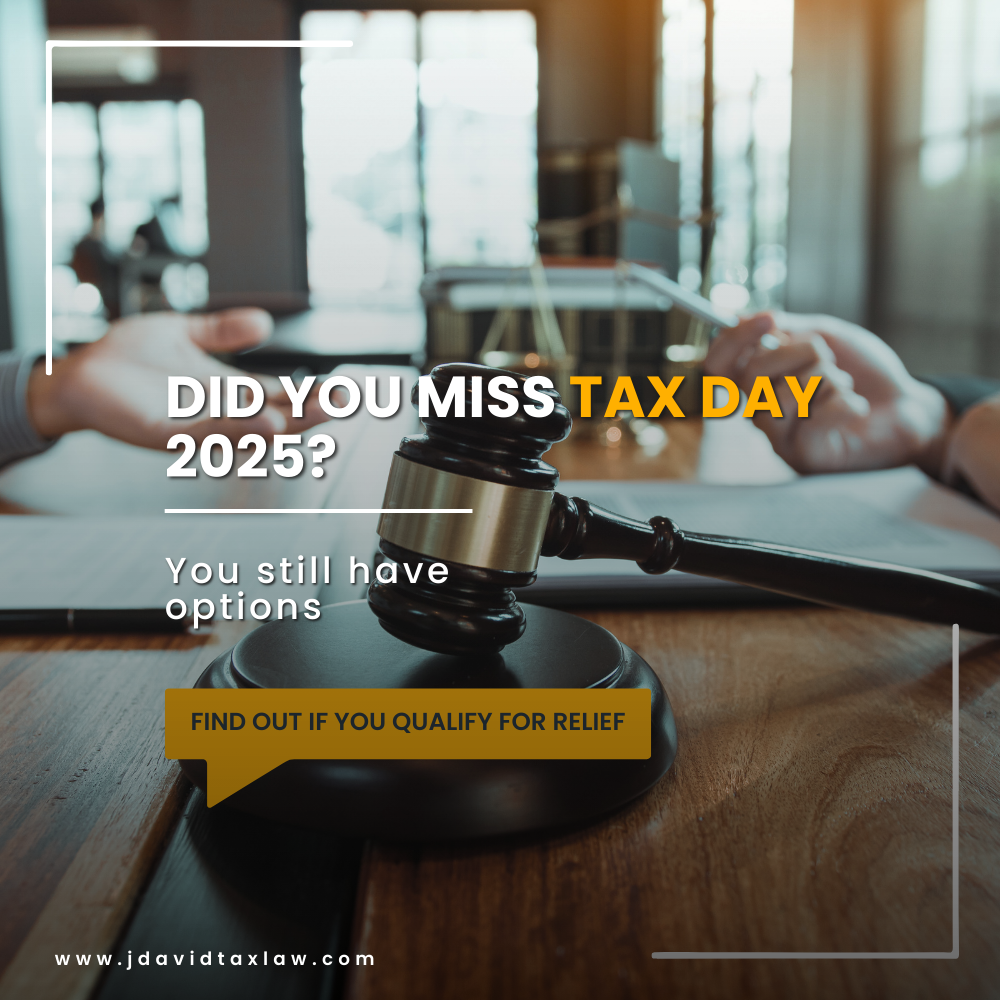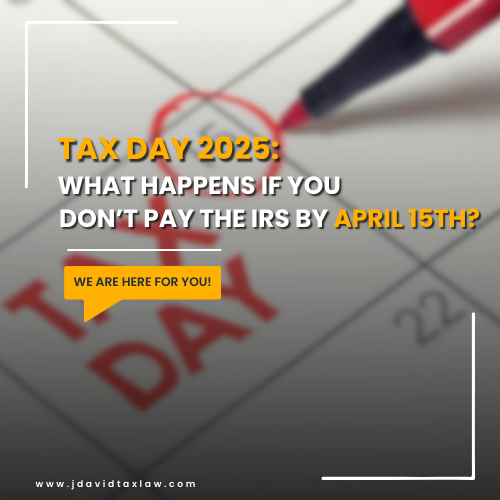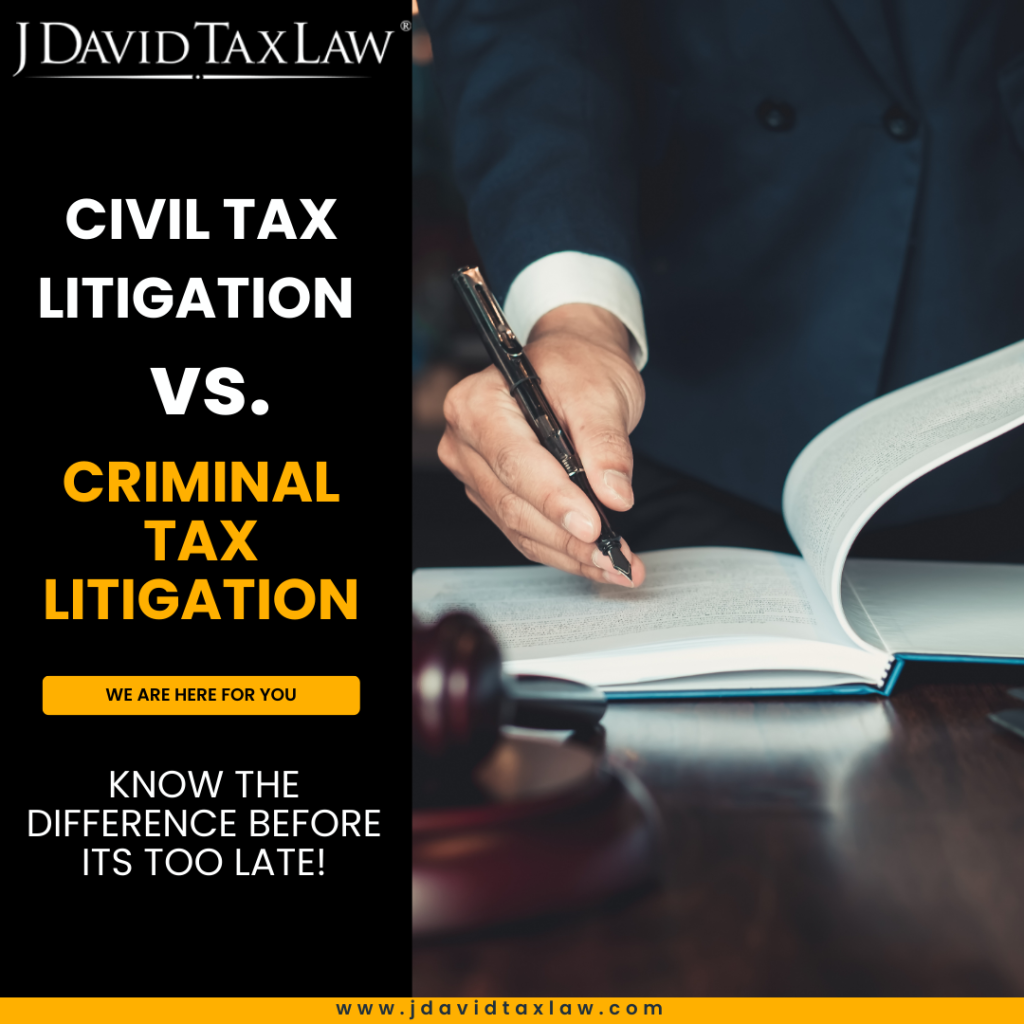Caught in a Tax Trap? Here’s How to Appeal a Levy!
No one should feel powerless in the face of a tax levy, especially when it’s imposed wrongfully.
Tax levies can disrupt your financial stability and cause significant hardship. However, not all levies are justified or accurate. If you’ve been hit with a wrongful levy claim, understanding how to appeal helps to reclaim your financial stability.
Read on as J. David Tax Law guides you through the steps to initiate an appeal and protect your assets.
What is a Tax Levy?
A tax levy is a legal action taken by the Internal Revenue Service (IRS) to seize your property or assets to satisfy delinquent taxes. Unlike a lien, a levy actually takes the property to pay the debt.
Tax levies can be imposed on various assets. This includes wage garnishment, bank levy, social security benefits, and even legal seizure of property (e.g. cars or homes).
Thus, it’s essential to recognize a wrongful levy quickly to mitigate its impact. Knowing the signs of a wrongful levy can empower you to take the necessary steps to appeal the levy. Here are the common signs of a wrongful levy claim:
Levying exempt assets (such as certain retirement funds, child support payments, or public assistance benefits)
Failing to notify the taxpayer before issuing the levy
Seizing assets that legally belong to someone else
Ignoring an active installment agreement or accepted Offer in Compromise
Misapplying recent payments that should have resolved the tax balance
6 Key Steps to Appeal a Wrongful Tax Levy
Step 1: Verify the Levy
The first step is to thoroughly review the levy notice sent by the IRS. Carefully check the details including the amount owed, the type of levy, and the tax periods involved.
Compare this information with your tax records to identify any discrepancies. Make sure that the levy notice is meant for you and not a result of an error or identity theft.
Step 2: Reach Out to J. David Tax Law
The next step to appeal a wrongful levy claim is to seek legal assistance. A tax levy attorney of J. David Tax Law can help you with the following:
Provide expert legal guidance
Help understand your rights
Evaluate your case
Prepare the necessary documentation
Develop a strategic plan to challenge the levy
Represent you throughout the IRS appeal process
J. David Tax Law specializes in preventing tax levy disputes and can offer invaluable support. Their legal assistance ensures that you have the best possible representation and a higher chance of successful appeal.
Step 3: Gather Supporting Documents
With the help of your legal team, the next step is to collect evidence to support your claim of a wrongful levy claim. Gather all relevant documents such as:
recent tax returns
payment receipts
bank statements
correspondence with the IRS
J. David Tax Law can assist in organizing these documents in a clear and logical order to present a strong case. This ensures you have all necessary paperwork that demonstrates your compliance and highlights errors made by the IRS.
Step 4: Contact the IRS
Contact the IRS using the information provided in the levy notice. With the assistance of J. David Tax Law, explain your situation clearly and provide the evidence you have collected.
Request an immediate review of the levy and ask for a temporary halt during the appeals process. Effective communication with the IRS is crucial to initiate the review process and prevent further collection actions.
Step 5: Request a Collection Due Process (CDP) Hearing
If the initial contact with the IRS does not resolve the issue, you should request a Collection Due Process (CDP) hearing.
A CDP hearing allows you to dispute the levy before an independent officer. To request a CDP hearing, you need to file Form 12153, “Request for a Collection Due Process or Equivalent Hearing,” within 30 days of receiving the final notice of intent to levy. This hearing is your opportunity to present your case in a formal setting and seek a resolution.
Step 6: Prepare for the CDP Hearing
Prepare for the CDP with tax lawyers.This step you will understand the issues you will be discussing and be ready to explain why the levy is wrongful.
During the hearing, the tax attorney will handle the negotiations and represent you, presenting your case concisely and confidently. They will address any questions or concerns raised by the hearing officer on your behalf.
How Long Does the Wrongful Levy Appeal Take?
The duration of a wrongful levy appeal can vary depending on several factors. To be specific, the complexity of your case and the responsiveness of the IRS.
Typically, after submitting a request for a CDP hearing, it may take several weeks to a few months for the IRS to schedule the hearing. Following the hearing, the IRS aims to provide a decision within 60 days. However, this timeline can be extended if additional information or documentation is needed.
It is best to stay in touch with the IRS and provide all requested information to expedite the appeal.
Conclusion
While a wrongful levy judgment can feel like a significant setback, there is hope for resolution. Taking charge of your financial situation in the face of a wrongful tax levy can be empowering. By understanding your rights and the steps needed to appeal, you can regain control over your assets and financial future.
At J. David Tax Law, they specialize in defending taxpayers’ rights and resolving disputes with the IRS. their tax attorneys work diligently to build a strong case on your behalf, protect your appeal rights and aim for a swift and favorable resolution.
Don’t let an erroneous levy claim undermine your financial security—reach out to a trusted expert today at (888) 342-9436 and take control of your financial future.
Your Tax Relief Questions, Answered
Yes, the IRS can levy retirement accounts for delinquent tax debt. This includes IRAs and 401(k) plans. However, this action is typically considered a last resort. The IRS must follow specific procedures and exhaust other collection efforts before targeting retirement funds. It’s crucial to address any tax issues promptly to avoid such severe measures.
The IRS notifies you of a levy by sending a final notice of intent to levy (Notice CP90) and your right to a hearing. This notice is sent at least 30 days before the levy action begins. The notice will detail the amount owed and provide information on your rights to appeal the levy through a CDP hearing.
If you receive a levy notice but cannot pay the debt, it’s crucial to contact the IRS to discuss your options. You may qualify for a payment plan or an offer in compromise to settle your debt for less than the full amount. Consider hiring a tax debt attorney to negotiate on your behalf and explore all available solutions to stop the levy.
If the IRS deems an improper levy, any funds already taken are typically returned to the taxpayer. The IRS will issue a refund for the amount seized, but the process can take some time, often several weeks. It’s important to keep thorough records and follow up with the IRS to ensure the timely return of your funds. Consulting with J. David Tax Law can expedite the resolution and recovery process.















